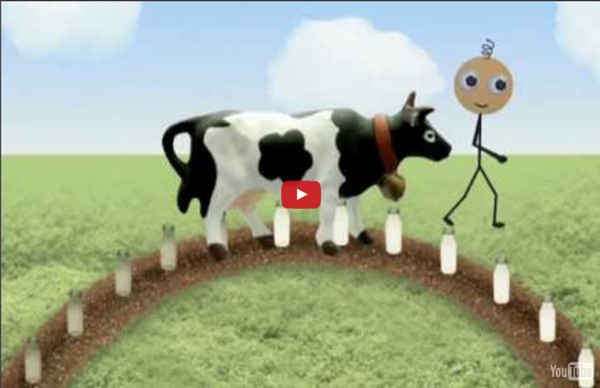



Changing State—Condensation | Chapter 2: States of Matter Prepare for the demonstration about 5–10 minutes before class. Materials for the demonstration 2 clear plastic cups Room-temperature water Ice cubes Gallon-size zip-closing plastic bag Procedure Place water and ice cubes into two identical plastic cups. Immediately place one of the cups in a zip-closing plastic bag and get as much air out of the bag as possible. Close the bag securely. Allow the cups to sit undisturbed for about 5–10 minutes. Wait 2–3 minutes.
Changing State—Evaporation | Chapter 2: States of Matter Note: Energy can also be transferred through radiation and convection, but this chapter only deals with heat transfer through conduction. Predict what might happen to a wet paper towel by the end of the class. Show students two pieces of brown paper towel. Dampen one with water so that the color appears darker than the dry piece of paper towel. Select a student to feel the difference between the two paper towels now, and again at the end of the class period. Place both paper towels up in a prominent location. Add 1 or 2 drops of glue where the hydrogen atoms meet the oxygen atoms. Moving Molecules in a Solid | Chapter 1: Matter—Solids, Liquids, and Gases Are you loving this? Not loving this? Please consider taking a moment to share your feedback with us. Thanks! Lesson 1.4 Key Concepts In a solid, the atoms are very attracted to one another. Summary Students will see a demonstration with a metal ball and ring showing that heat causes atoms to spread a little further apart. Objective Based on their observations students will describe, on the molecular level, how heating and cooling affect the motion of atoms in a solid. Evaluation Download the student activity sheet, and distribute one per student when specified in the activity. Safety Be sure you and the students wear properly fitting goggles. Materials for the Demonstration Ball and ring designed specifically for this demonstration] Bunsen burner for heating the ball Room-temperature water (to cool the ball) Notes about the materials The metal ball and ring is available from Sargent Welch (WL1661-10) or Flynn Scientific (AP9031) or other suppliers. About this Lesson
The Ups and Downs of Thermometers | Chapter 1: Matter—Solids, Liquids, and Gases Find out what students know about thermometers. Hold up an alcohol thermometer and ask students: Why do you think the liquid in a thermometer moves up and down when it is heated and cooled? Students should realize that the movement of the liquid in a thermometer is related to the motion of the molecules of the liquid when they are heated and cooled. Remind students that molecules move faster and a little further apart when they are heated. Student research about thermometers Students have seen that adding energy to a liquid increases the motion of the molecules and causes them to spread a little further apart.
Molecules in Motion | Chapter 1: Matter—Solids, Liquids, and Gases Ask students to help you design an experiment to see if the speed of water molecules is different in hot water compared to cold water. Ask students questions such as the following: Is the speed of water molecules different in hot and cold water? What can we do to find out? Have students explain why hot water takes up more space than room temperature water. Molecules Matter | Chapter 1: Matter—Solids, Liquids, and Gases Note: Some solids, liquids, and gases are made of atoms, and some are made of molecules. Since the concepts covered in Chapter 1 apply to both atoms and molecules, the term “particle” is used as a generic term to include both. At this point, it is enough to give students simple working definitions of “atom” and “molecule.” You can tell students that an atom is the smallest building block of matter and that a molecule is two or more atoms connected together. Have a discussion about chemistry and matter. Water Drops Unite Teacher Preparation Print two “Water Drops Unite” sheets for each group.Procedure Tape a piece of wax paper over the “Water Drops Unite!”
Munching on Matter We're studying matter in science right now, and what better way is there to learn about science than to eat it? Here are a few matter ideas I stole from the web. Check out my pics and follow the original links to the amazing teachers who came up with the ideas. 1. Froot Loops Matter Bulletin Board thanks to Beth Sawyer 2. Chemical Changes: -Burning the marshmallow -Eating the s'more Physical Changes: -Breaking the graham cracker -Melting the chocolate I was inspired to use the s'mores activity by the lesson idea I found on superteacherworksheets.com.